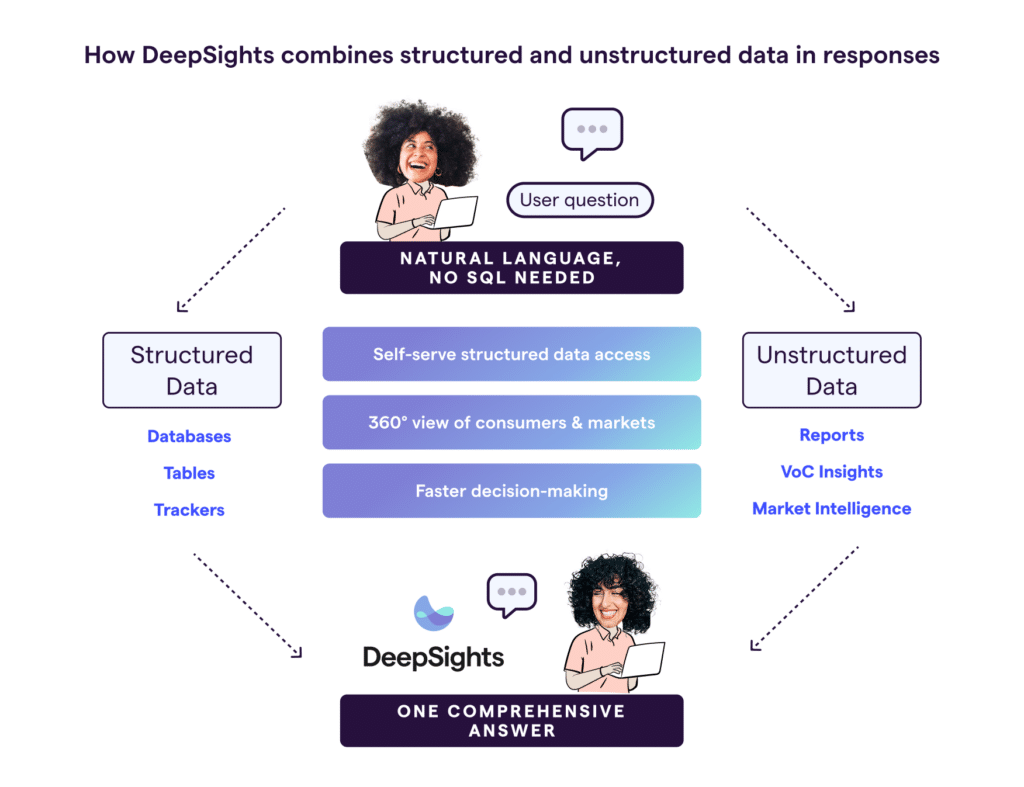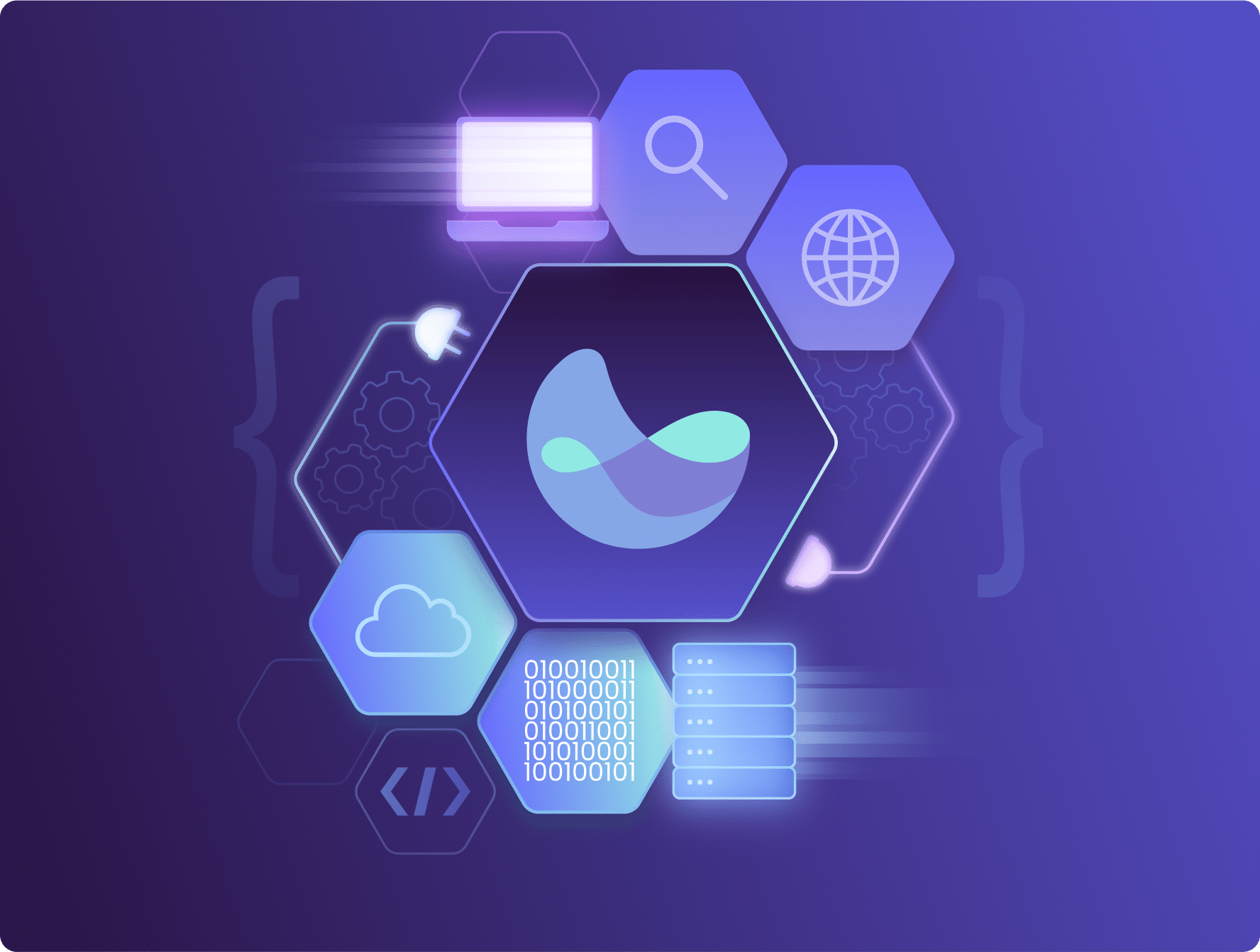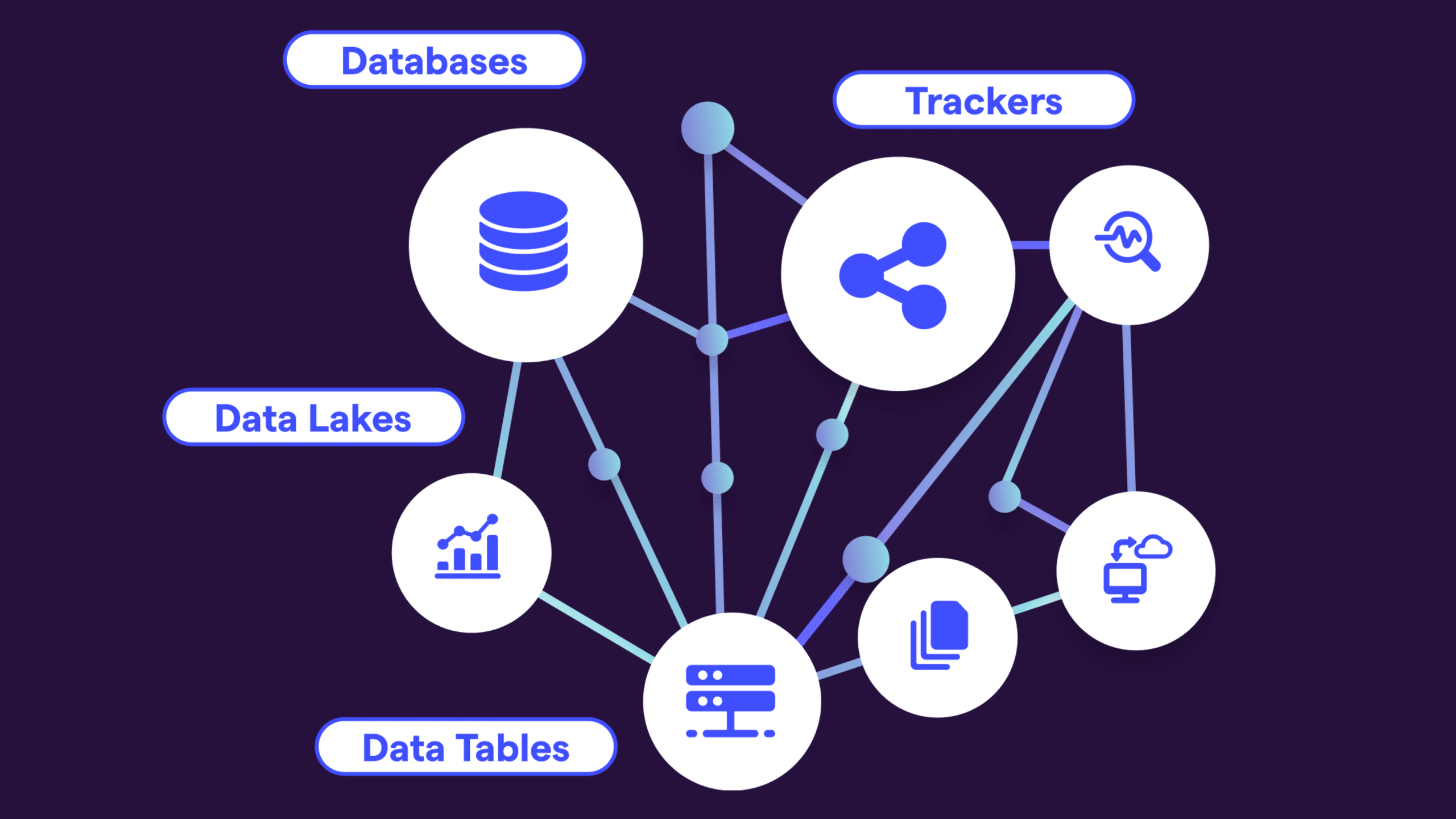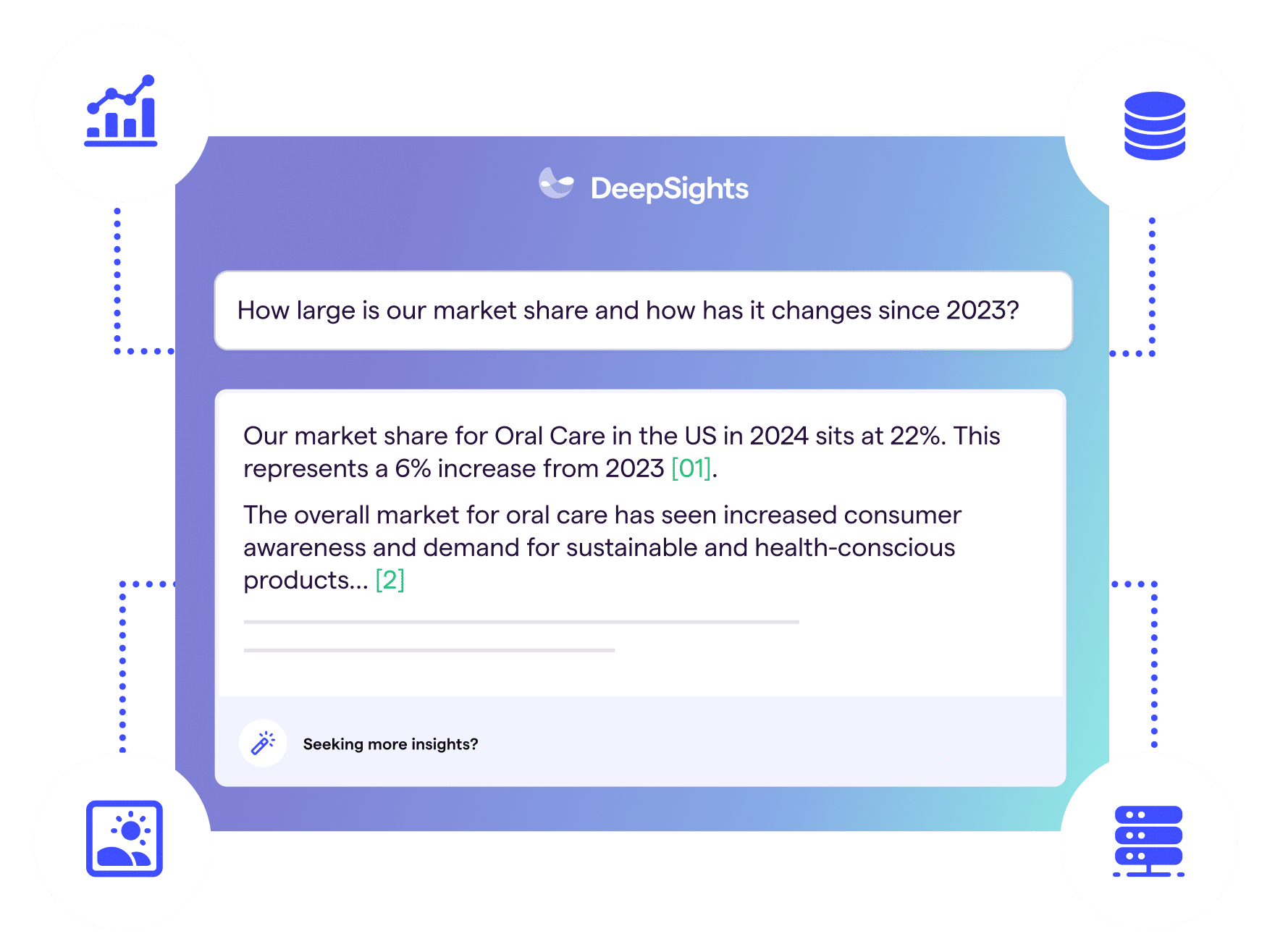In today’s rapidly changing markets, the ability to harness real-time data insights and act fast is more critical than ever. Organizations rely on high-quality intelligence, and those that can quickly access and analyze relevant data gain a significant competitive edge.
Why market insights matter for business results
Your ability to make informed decisions based on comprehensive data analysis is paramount. According to a study by McKinsey, data-driven organizations are:
- 23 times more likely to acquire customers
- Six times more likely to retain customers
- 19 times more likely to be profitable
Similarly, A Forrester study found that companies leveraging data experience:
- 3x higher revenue growth than their competitors.
- More agile decision-making by responding quickly to market changes.
- Stronger customer retention
When you can quickly access and synthesize structured and unstructured data from multiple sources, you are better equipped to navigate the complexities of the market, identify trends, and drive smarter business decisions. Use our ROI calculator to predict how using insights effectively will impact your organization’s bottom line.
The challenge: Making data more accessible and data analysis more effective
As an insights professional, you are aware of the challenges of managing vast amounts of data available in databases, dashboards, and tracking studies — and how difficult it is to extract and utilize data effectively and quickly. On a daily basis, this leaves you bogged down by data access and analysis, and struggling to find the time for more high-value, strategic tasks.
But inefficiencies in data access don’t just waste time — they cost businesses millions. Gartner reports that poor data quality costs organizations an average of $12.9 million annually. When critical data is trapped in different systems, errors, misinterpretations, and lost opportunities become inevitable.
Additionally, accessing structured data requires proficiency in Structured Query Language SQL or reliance on data analysts, leading to delays and inefficiencies. As our own research shows, this leads many organizations to struggle with:
- Data silos that prevent cross-functional collaboration, as valuable data often remains siloed and difficult to integrate into decision-making processes.
- Reliance on analysts for structured data retrieval, causing bottlenecks.
- Lack of integration between insights drawn from structured vs. unstructured data, making it hard to get a 360°-market perspective.

Understanding structured and unstructured data
Structured data is highly organized, formatted, and easy to search, typically found in databases and spreadsheets. Unstructured data, on the other hand, lacks a predefined format and includes text, images, videos, and other complex data types. Understanding these differences is essential for businesses looking to leverage data effectively.
Defining structured data
Structured data is organized information stored in a predefined format, making it easily accessible for analysis and reporting. It follows a systematic structure, usually arranged in tables or rows and columns, ensuring clear relationships between different data points.
Characteristics of structured data:
- Highly organized: Follows a defined structure, making it simple to store, retrieve, and process
- Stored in databases: Typically housed in relational databases for easy real-time updates and access
- Easily searchable: Can be quickly queried and analyzed using tools like SQL, or BI platforms
- Tabular format: Often information represented consistently in a structured, table of columns.
Examples of structured data:
- Sales transactions drawn from CRM and finance systems (product details, prices, and quantities sold)
- Market share data, brand health data, NPS/customer satisfaction data
- Website analytics (page views, bounce rates, and conversion rates)
Structured data is widely used in all industries for reporting, trend analysis, and strategic planning. For example, covering market share changes in Finance, sizing new markets in Healthcare, exploring shopper insights in Retail, and assessing brand health for key products in CPG.

Defining unstructured data
Unstructured data is information that does not have a fixed format or predefined organization. It is often human-generated and exists in various formats, making it more challenging to analyze compared to structured data.
Characteristics of unstructured data
- No fixed format: Does not follow a consistent structure, making it harder to process.
- Diverse forms: Includes text, images, audio, and videos.
- Large volume: Often generated in massive quantities, such as social media posts and emails.
- Complex processing needs: Requires advanced AI, natural language processing (NLP), or machine learning (ML) techniques to extract insights.
Examples of unstructured data
- Emails, chat conversations, and customer feedback
- Social media content, including posts, comments, and multimedia
- Audio and video recordings such as podcasts and interviews
- Research documents, PDFs, and presentations
As unstructured data becomes more prevalent, businesses are increasingly leveraging AI-driven tools to process and analyze it effectively.
Structured vs. unstructured data: Key differences
Understanding the distinction between structured and unstructured data is crucial for leveraging market insights effectively:
| Feature | Structured Data | Unstructured Data |
| Format | Predefined schema (tables, columns) | No fixed format (text, images, videos) |
| Storage | Databases, spreadsheets, BI tools | Documents, emails, multimedia content |
| Ease of Analysis | Often requeirs SQL tools to search and analyze | Requires AI or NLP for meaningful insights |
| Examples | Customer data, sales figures, web analytics | Social media posts, survey responses, reports |
DeepSights: Bridging the gap between unstructured and structured data with comprehensive market intelligence analysis
Your data holds the answers — but getting to it shouldn’t require SQL expertise, multiple tools, or waiting on analysts. Market Logic’s AI-powered market intelligence and insights platform, DeepSights™, makes knowledge instantly accessible by integrating access to all data sources from a single entry point using only plain language.
Unlike traditional tools that specialize in either structured or unstructured data, DeepSights now seamlessly integrates both, giving you a 360° view of the market—all from a single access point. Also, by eliminating the need for SQL expertise, DeepSights ensures seamless access to structured data, empowering users to retrieve and analyze information effortlessly.

This latest enhancement to DeepSight introduces a new era of user-friendly data democratization that ensures business users get the full benefit of trusted corporate knowledge housed in reports, news, business systems, and databases before making strategic decisions. Read our press release to find out more about this latest iteration.
Unified data access and more comprehensive data analysis
With full traceability and verification, DeepSights provides evidence-backed insights that users can trust. DeepSights ensures your organization can harness the full power of its structured data — driving smarter, faster decisions with unified data access across all sources in one place. With DeepSights, you can:
- Self-serve structured data from from databases, data lakes, dashboards —without SQL expertise.
- Ask questions in plain language and receive instant, data-backed answers.
- Analyze data faster by eliminating manual extraction and spreadsheet manipulation.
- Combine multiple data sources for a richer, more contextualized understanding of your market and customers.

Smarter, faster, and more intuitive data analysis
DeepSights transforms the way insights professionals interact with data. Instead of spending hours retrieving and processing data, you can now focus on uncovering insights that drive real business impact. It makes structured data analysis fast, effortless, and user-friendly to everyone in the organization.
Here’s how DeepSights simplifies data analysis:
- No-code querying: Simply type in a question and get structured data insights in seconds.
- Automated calculations: Perform trend analysis, key metric comparisons, and time-based analysis without complex formulas.
- Instant insights: Move from data request to decision-making in real time.

This means you no longer have to wait on data teams to pull reports or translate technical outputs, giving you full control over your insights workflow.
How it works: Fast, effortless structured data analysis
DeepSights transforms the way insights professionals like you interact with data. Instead of spending hours retrieving and processing data, you can now focus on uncovering insights that drive real business impact. As a user, you can self-serve answers from trackers and tables instantly.
How DeepSights simplifies data analysis
- Key metric calculations: Compute totals, averages, and frequencies (e.g., customer satisfaction by region, compare sales across product categories).
- Time-based trend analysis: Track changes and trends over time (e.g., spot shopping trends across different demographics, measure sales lifts across ad campaigns).
- Data spread analysis: Understand how values are distributed across segments (e.g., income distribution of target shoppers, price sensitivity across customer segments).
- Data correlations: Find relationships between multiple data points (e.g., link ad spend to purchase conversions, correlate product features with customer satisfaction scores).
See practical example scenarios of what you can do with DeepSights to get the most out our insights by diving into our use cases.
Overcome data silos, connect the dots, and act with confidence
DeepSights simplifies structured data access with a no-code, user-friendly approach, allowing professionals to focus on insights rather than navigating complex data queries. It also breaks down data silos by connecting insights across multiple applications, allowing professionals to extract valuable information without requiring new coding skills or waiting on other teams for support.
In essence, DeepSights connects the dots. Now, from one single point, you are able to bring together all the relevant data points into one.
Harness the power of your structured data — and embrace the future with DeepSights
Ready to harness the power of AI-driven insights to make faster, smarter decisions? Explore DeepSights today and unlock the full potential of your market insights by signing up for a free, tailored demo.
If you’re already a Market Logic customer, these new features will be integrated into your existing set up upon purchase.








